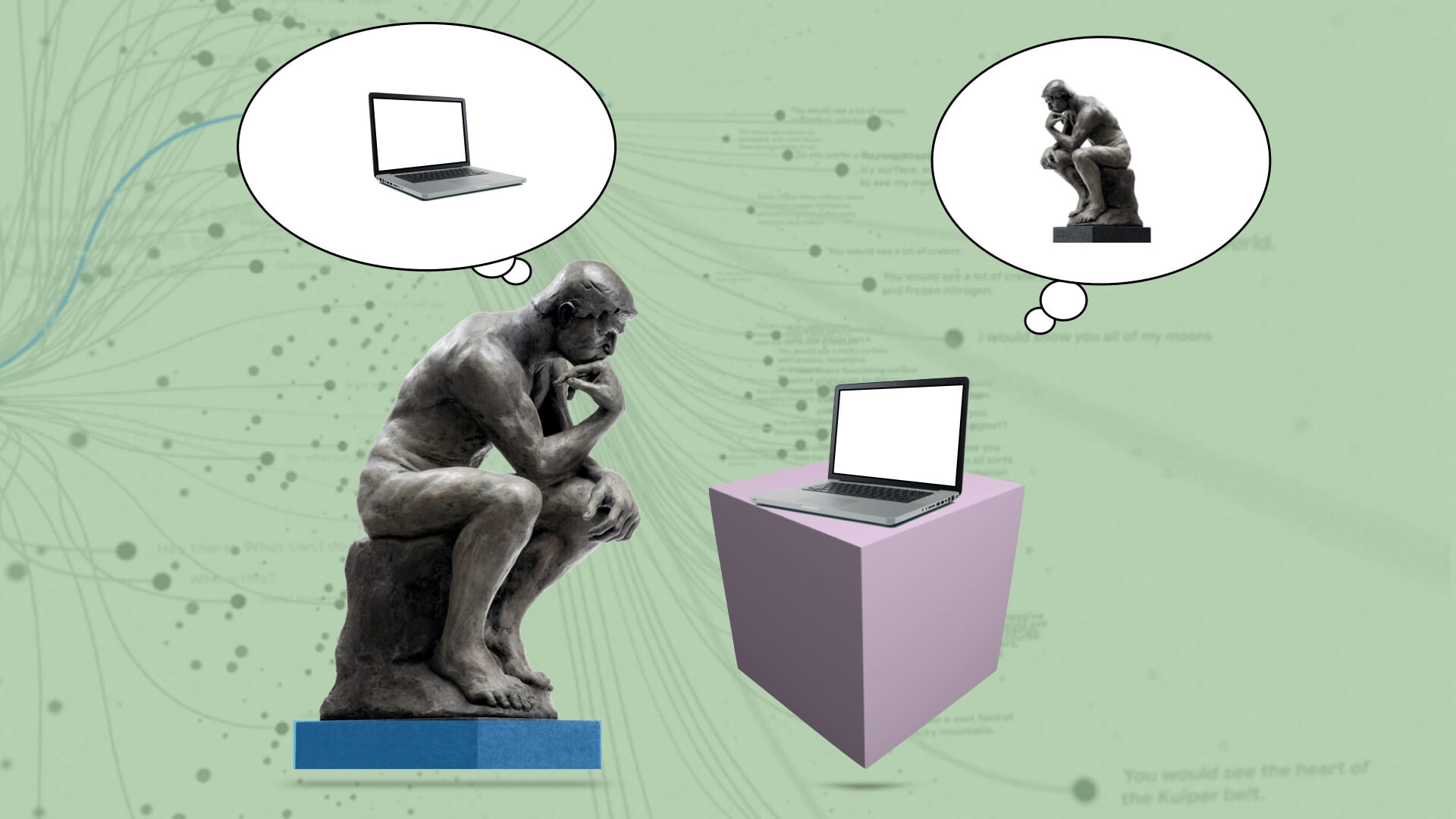Research: Gen AI
A (relatively) succinct take
on GenAI in Education
Since ChatGPT3 erupted into our lives, I have been playing, thinking, and writing about what it means for us as educators. There are just so many dimensions and it is difficult to capture all of what I have been involved in a succinct manner. But maybe this keynote I recently gave at a conference at the University of Michigan Flint captures some of the key ideas I have been struggling with. More at Generative AI in Education: Keynote at UofM Flint.
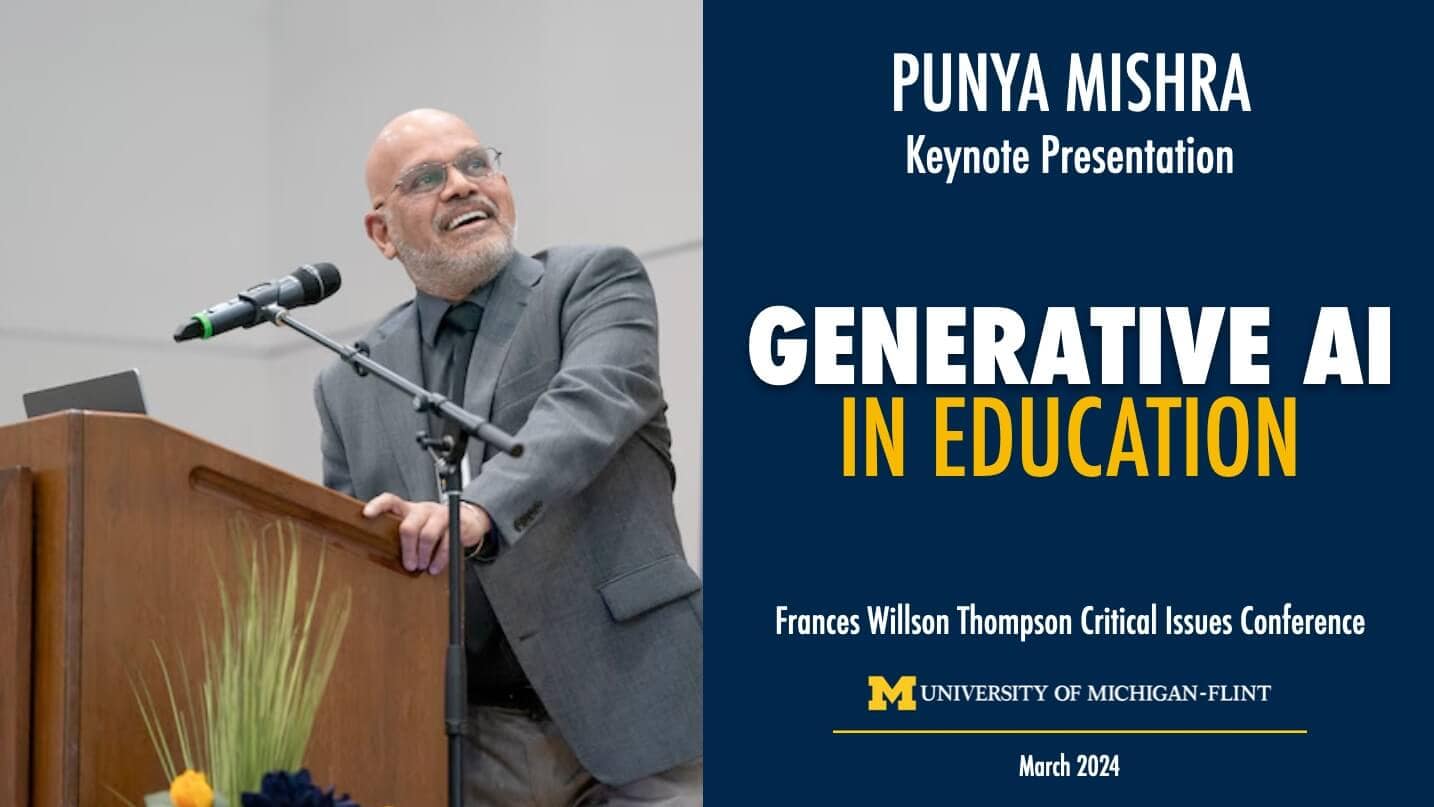
All my writing on GenAI
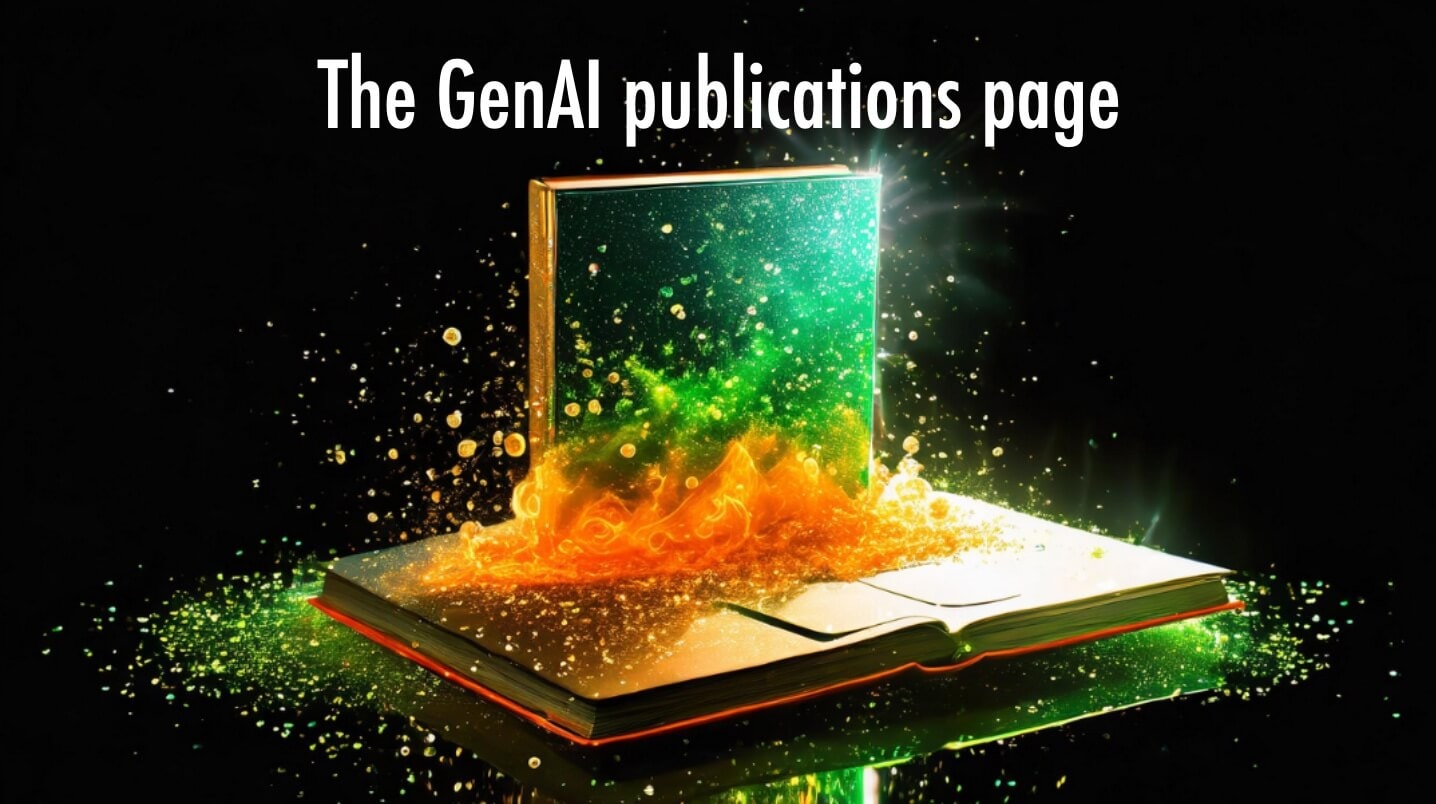
Over the past year and a half I have been writing quite extensively about generative AI and what this new technology means for us, as educators, learners and people in the world. To make it easy to find here are two key links:
- All my academic publications related to GenAI
- All my Blog Posts related to genAI
Gen AI is WEIRD
(and an aid to creativity)
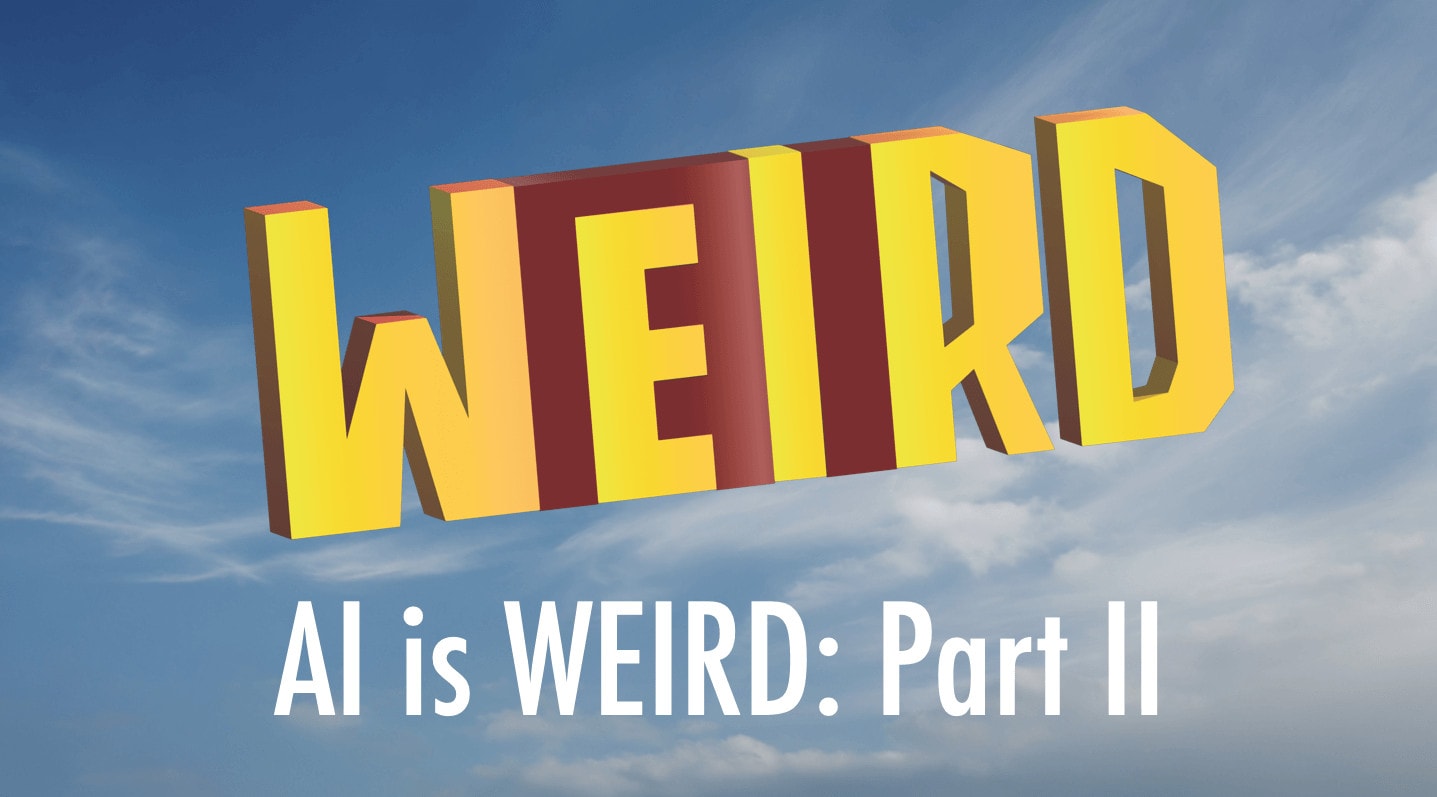
These large language models (LLMs) are weird along multiple dimensions, some of which I explore in these two blog posts (GenAI is weird I and II).
At the same time this “weirdness” is what gives Gen AI some its critical powers to help us become more creative, for instance in helping me write this Halloween story (Vikram or Vetaal). I do believe that these tools can be used creatively by educators and learners to enhance the educational process. These tools have given me super-powers that I did not have a few months ago, or even a few days ago! But what that will need an openness to experiment and play, to keep the technology in mind, even while we think of new ways of representing and engaging with content, and through that connecting with our learners, in specific contexts of use. More here…
Psychology of media:
Precursors to the current work
My current work on AI has been informed by some work I did almost two decades ago on the psychological aspects of working with interactive media. Building on Computers As Social Actors Hypothesis this line of work explores how people often respond to interactive media just as they respond to real people. For instance, research has shown that people are polite to computers, treat them as teammates, stereotype them, and feel flattered by them. Back in the late 1990’s and early 2000’s I was involved in a extensive research program that systematically explored the educational and design implications of this attribution of agency to interactive media.
This work drew upon evidence from cognitive science, developmental psychology, and evolutionary psychology to argue that this intentional stance is a “cognitive illusion,” that is the product of highly sophisticated, deeply entrenched inferential principles that are quite inaccessible to conscious introspection or voluntary control. This led to a range of articles and posts here are some key ones
- Mishra, P., Nicholson, M., & Wojcikiewicz, S. (2001/2003). Does my wordprocessor have a personality? Topffer’s Law and Educational Technology. Journal of Adolescent and Adult Literacy. 44 (7), 634-641.
-
Mishra, P. (2006). Affective Feedback from Computers and its Effect on Perceived Ability and Affect. Journal of Educational Multimedia and Hypermedia. 15 (1), pp. 107-131.
-
Can a computer program be sentient? Insights from Topffer (blog post)
GenAI and ethics
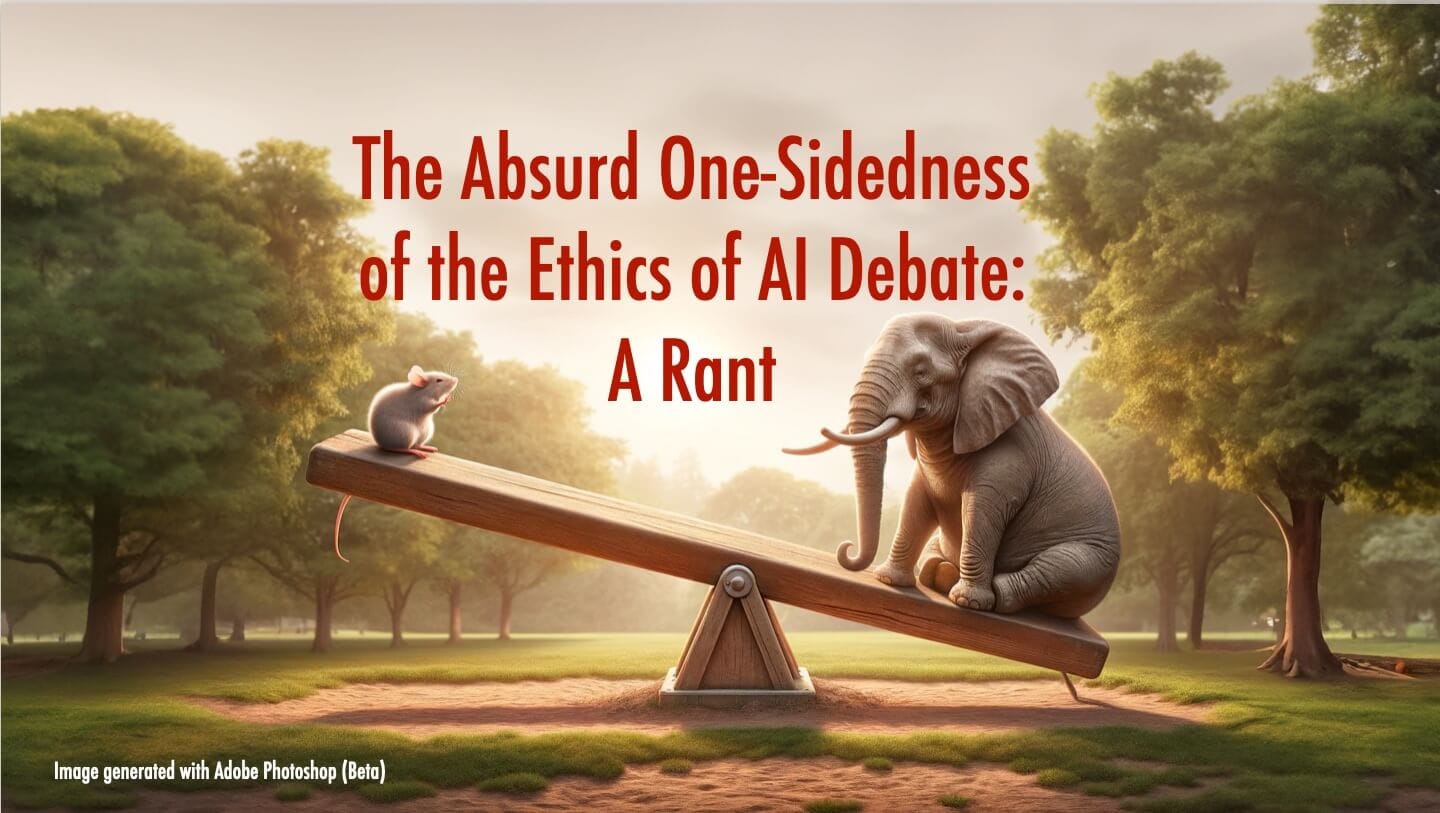
No conversation about AI and education is complete without discussing the importance of the ethical uses of the technology. I have, as most educators, been thinking about these issues and have written about them in this blog and in other academic outlets. Here are a few.
- The absurd one-sidedness of the ethics of AI debate
- GenAI: Will history repeat or (just) rhyme
- Close, K., Warr, M., & Mishra, P. (2023). The Ethical Consequences, Contestations, and Possibilities of Designs in Educational Systems. TechTrends. https://doi.org/10.1007/s11528-023-00900-7
- Implict bias in AI systems
- How to identify AI generated text
The true nature of GenAI
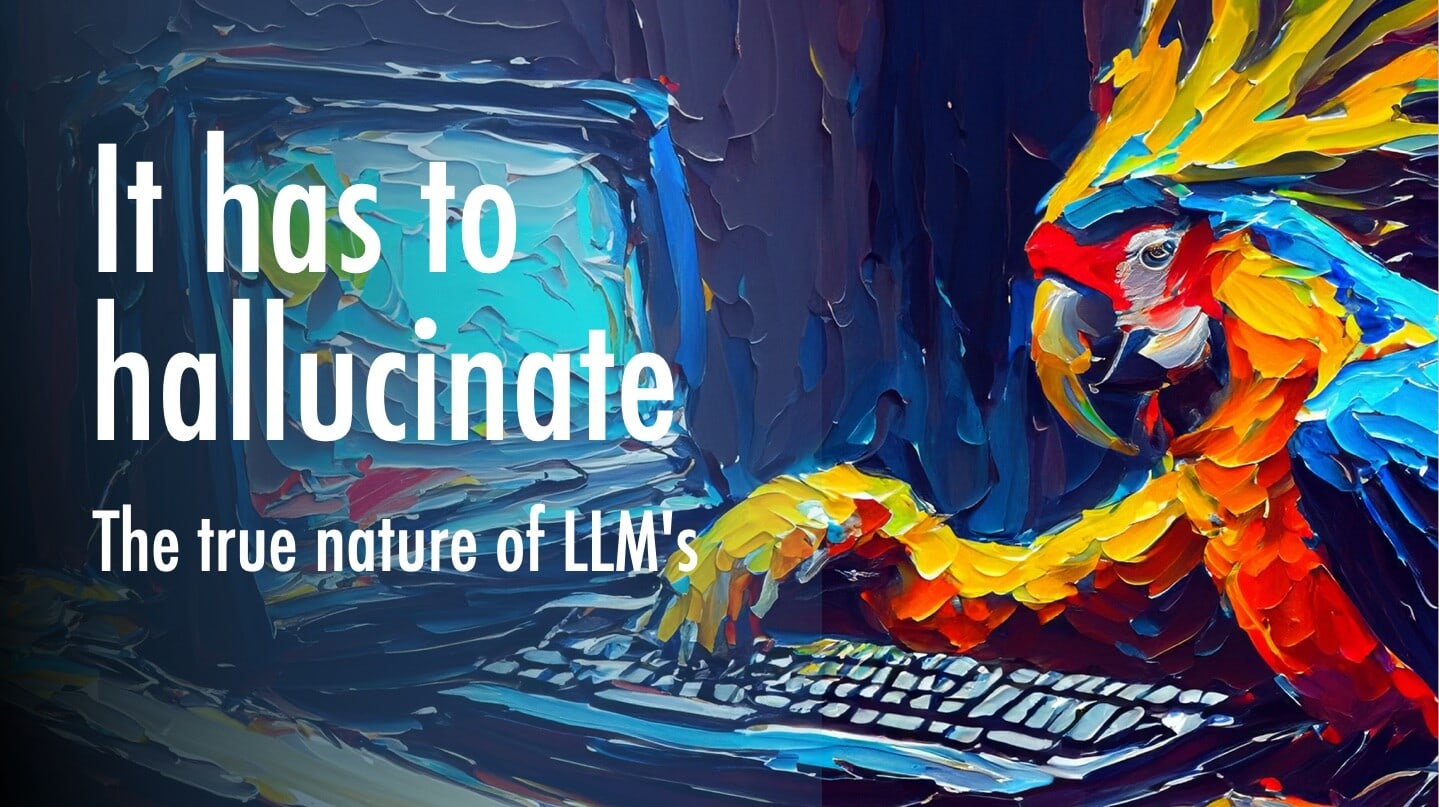 The most important insight concerning GenAI is philosophical in nature. These technologies require a shift in perspective from a mere utilitarian technological approach to a relational one. Traditional dichotomies—machine versus tool, tool versus object—blur and lose their relevance when we speak of GenAI. GenAI doesn’t just operate in isolation, but it interacts, learns, and grows through dialogue with humans. This collaborative dance of information exchange collapses the old boundaries that once defined our relationship with tools and technology. The meaning of these entities is not fixed or predetermined, rather, how we make sense of these new tools is emergent based on multiple rounds of dialogue and interactions with them, akin to how we engage, interact and learn from and with human correspondents. Thus, we’re not just users or operators, we’re co-creators, shaping and being shaped by these technologies in a continuous and dynamic process of co-constitution.
The most important insight concerning GenAI is philosophical in nature. These technologies require a shift in perspective from a mere utilitarian technological approach to a relational one. Traditional dichotomies—machine versus tool, tool versus object—blur and lose their relevance when we speak of GenAI. GenAI doesn’t just operate in isolation, but it interacts, learns, and grows through dialogue with humans. This collaborative dance of information exchange collapses the old boundaries that once defined our relationship with tools and technology. The meaning of these entities is not fixed or predetermined, rather, how we make sense of these new tools is emergent based on multiple rounds of dialogue and interactions with them, akin to how we engage, interact and learn from and with human correspondents. Thus, we’re not just users or operators, we’re co-creators, shaping and being shaped by these technologies in a continuous and dynamic process of co-constitution.
Teacher Knowledge (TPACK) in
an age of Gen AI
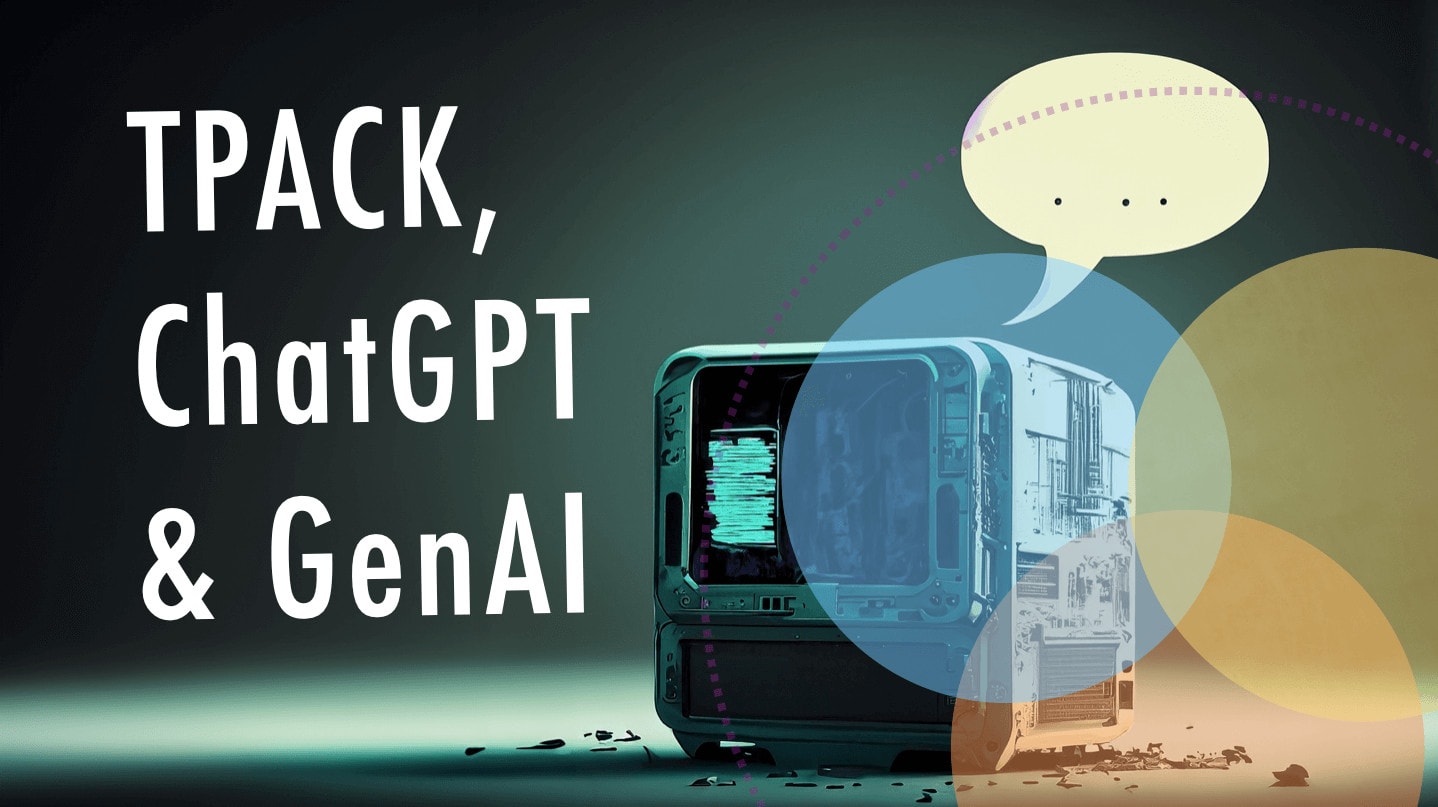
The rise of Generative AI (and tools such as ChatGPT) and their potential impact on education have been discussed and debated ad-nauseam. The key question, as teacher educators, is what it is that teachers need to know to intelligently integrate these technologies in their practice? We explore this and more in:
Mishra, P, Warr, M, & Islam, R. (2023): TPACK in the age of ChatGPT and Generative AI. Journal of Digital Learning in Teacher Education, DOI: 10.1080/21532974.2023.2247480
This paper, which received the JDLTE Outstanding Research Paper Award, brings together some early work on people’s psychological responses to media, my work on the TPACK framework, and our evolving understanding of these new technologies. An executive summary is available in 5 different languages: English, Arabic, Spanish, Mandarin, Portuguese and Turkish.
Also relevant:
Mishra, P., Oster, N., & Henriksen, D. (2-24). Generative AI, Teacher Knowledge and Educational Research: Bridging Short- and Long-Term Perspectives. TechTrends. https://doi.org/10.1007/s11528-024-00938-1
ChatGPT is a smart drunk (occasionally biased) intern
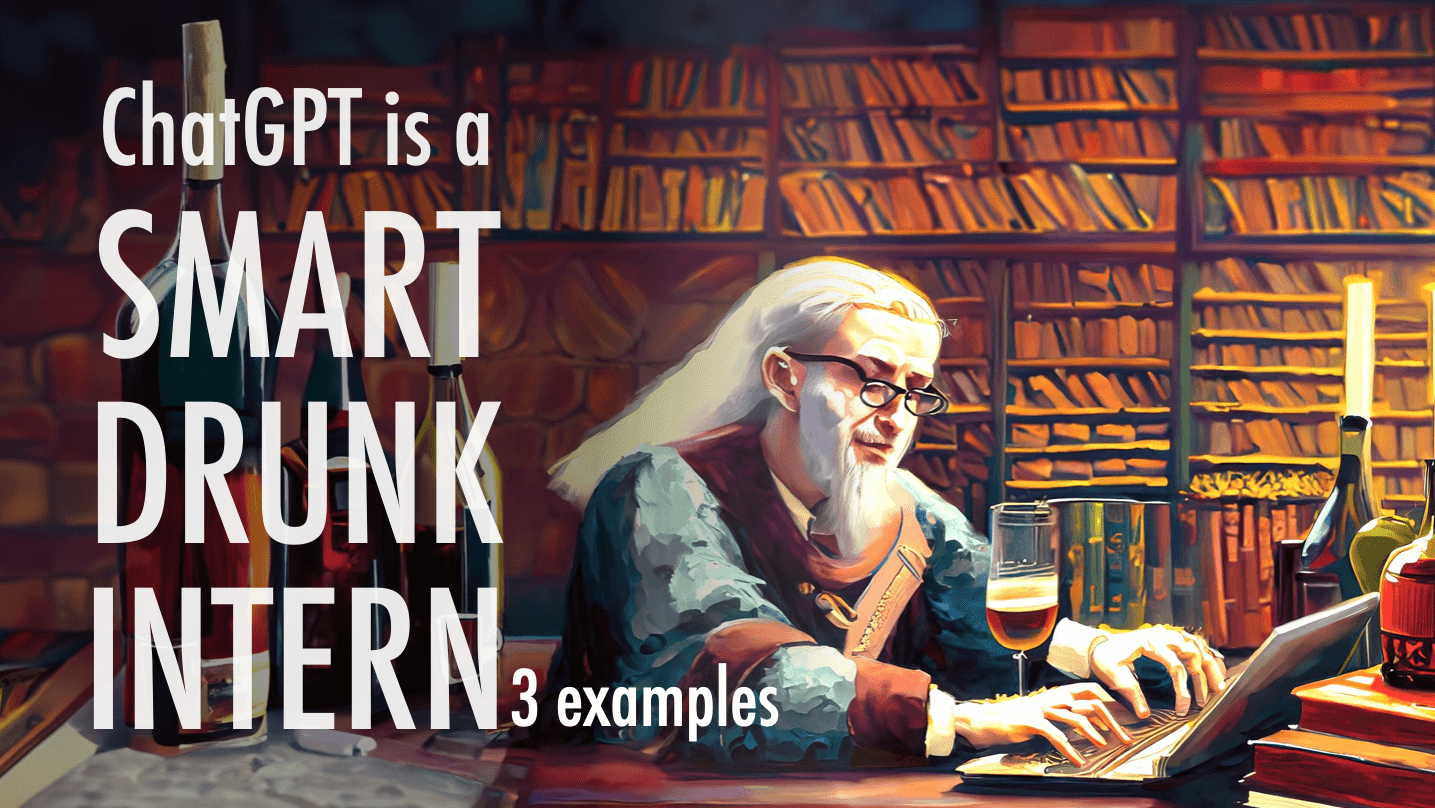
Working with generative AI is like having, at your beck and call, a really smart, but (occasionally) drunk, intern.
These tools are intelligent, in that they can go beyond the information given and have the capacity to learn, adapt, understand / handle abstract concepts and solve problems. Second, genAI is conversational, in that it uses language (a uniquely human capability), and can understand and respond to queries and prompts in a threaded manner, guided by context and the history of prior interactions. This combined with its expertise make it an ideal working partner, a smart intern as it were.
There you have it, a pretty smart intern.
Sadly, this intern sometimes hallucinates, and makes things up. Moreover, it is quite confident of the quality of its output. And as you can imagine, that can be a problem. That is where the “drunk” part comes in. This connects with some other writing I have done around the fact that ChatGPT is a bulls*** artist (building on philosopher Harry Frankfurt’s technical definition of the term). As he said, “Bullshit is unavoidable whenever circumstance require someone to talk without knowing what he is talking about” and that fact is deeply true of these large language models.
Understanding Media
(to better understand GenAI)
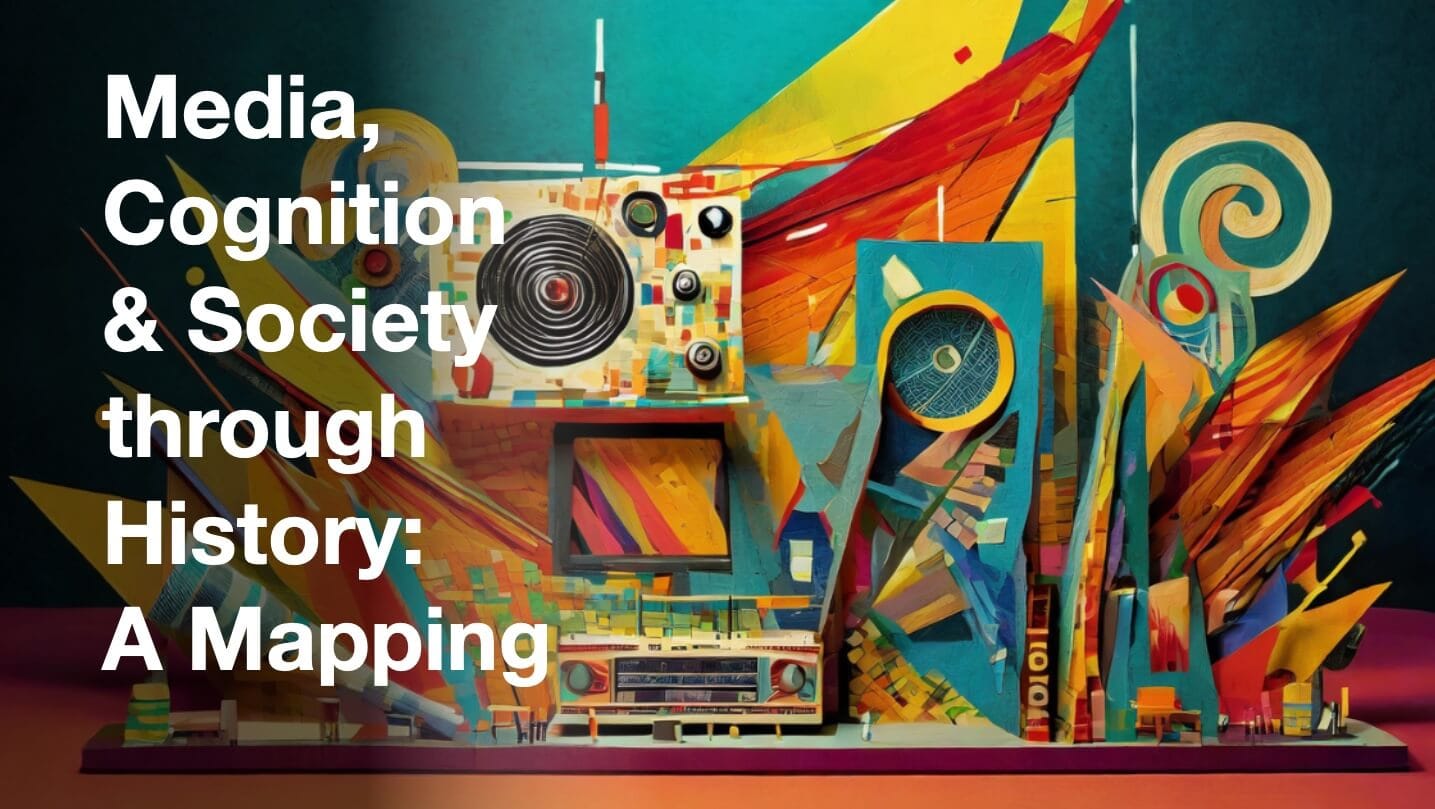
If oral cultures prioritize memory and print cultures emphasize systematic organization, what types of knowledge will AI systems foster?
The idea underlying this quote has been with me for a long time. In fact, the first academic paper I ever published, a book chapter titled Technology, Representation & Cognition with Rand Spiro and Paul Feltovich focused on exactly this question.
Essentially, media are the proverbial water that the fish does not see. I suggest that the development of media and communication technologies throughout history has profoundly shaped the creation, preservation, and dissemination of knowledge and culture, and through that the contexts within which education happens. From the oral traditions that shaped early societies through the impact of print, to the transformative influence of the internet and social media, each medium has left an indelible mark on the way we communicate, learn, and perceive the world. And this will be true of AI as well.
This is not to make a deterministic case for the impact of media. Technologies do not impose but they do open zones or possibility or support one way of thinking more strongly than another.
I have written extensively about this, from a post about LLMs and hallucination, to this series on how media influence our thinking and finally in this post titled Media, Cognition & Society through history
Blog posts related to Generative AI
TPACK Newsletter, #44 March 2021
This is a delayed (by more than a year) posting of the TPACK newsletter #44 (link to PDF). My apologies, I am not entirely sure how I missed that. As always, Judi Harris and team have done a great job. You can find the previous issues archived here. This issue...
Creativity online & in maker spaces
As a part of our ongoing series on creativity, technology and learning for the journal TechTrends we recently spoke with two nationally recognized scholars: Dr. Leanna Archambault and Dr. Edward Clapp. See below for introductions to both scholars as well as...
Presentation at University of Zurich
I was invited by my friend Dominik Petko, Professor of Teaching and Educational Technology at the Institute for Educational Science at the University of Zurich to make a presentation to their faculty and staff. The video of my presentation (Contextualizing TPACK...
Fishing for problems: Podcast interview
I was recently interviewed by Matt Schneidman (Curator, Creator, Podcast Host) for his Fishing for Problems podcast. Matt also publishes an ed-focused newsletter. Our discussion was broadly framed around educational technology and the TPACK framework - but...
TPACK & More: Presentation at RemoteK12 summit
REMOTE K12: The Connected Teacher Summit, was a one-day virtual summit hosted by ASU, designed for K-12 teachers and those that support and enable teachers in district public, charter and private schools. I presented a talk titled: Technology in teaching &...
Contextualizing TPACK within systems and culture
Melissa Warr and I were recently asked to write a afterword to a special issue of the journal Computers in Human Behavior. The focus of the special issue was on the kinds of knowledge, skills and attitudes (KSA) teachers need to successfully integrate technology in...
China, Australia, Nepal & Australia: A zoom tour
Over the past couple of months I have been asked to give presentations at a variety of different conferences or organizations spread across the world. They are archived below. I was invited to give a talk as part of the Dean's Lecture Series at the School of...
Embracing failure (in a first year technology course)
In his book The child and the curriculum; and The school and society John Dewey identified four key impulses for learning that he placed at the foundation of the curriculum. The key education challenge, he argued, is to nurture these impulses for lifelong learning:...
A systems view of technology infusion
One of the significant changes in my way of thinking about technology integration has been a shift in focus—away from designing training and programs that target individual teachers to designing systems (both at K12 and higher education levels) that support teachers...
COVID19 & Education
The COVID19 crisis has disrupted education globally at an unprecedented scale. In some ways, we are living through the largest educational social experiment in history! Over the past year I have been involved in a range of initiatives, discussions, interviews, and...
Designing Theory: New article
Theory is of incredible importance to scholars and researchers. Theories allow us to understand, explain and predict phenomena in the world. That said it is often difficult to say just where theories come from. The standard model—that data lead to laws, that in turn...
EDUsummIT 2019: eBook released
EduSummIT is a global community of policy-makers, researchers, and educators working together to move education into the digital age. EDUsummIT has been convening every two years since 2009. In each case the participants focus on some significant theme relevant to...
TPACK Newsletter, #42 Nov. 2019
Here is the latest pdf version of the TPACK Newsletter (#42, November 2019), as curated and shared by Judi Harris and her team. (Previous issues are archived here.) This issue includes titles, abstract and links to 116 articles, 5 book-chapters, and 34...
A visit to Israel
I just got back from a trip to Israel. I was invited by the MEITAL 2019 conference and the Kibbutzim College of Education, Technology and the Arts. MEITAL is an organization of higher education institutions in Israel focusing on understanding and responding to local...
TPACK Newsletter #41, May 2019
Here is the latest pdf version of the TPACK Newsletter (#41, May 2019), as curated and shared by Judi Harris and her team. (Previous issues are archived here.) This issue includes 59 articles, 4 book chapters, and 20 dissertations that have not appeared...

